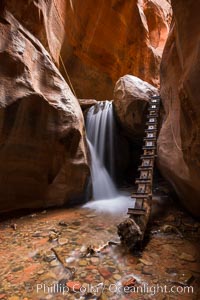
Kanarra Creek Falls in Kanarra Canyon, Utah.
Location: Kanarra Creek, Kanarraville, Utah
Image ID: 32638
Location: Kanarra Creek, Kanarraville, Utah
Image ID: 32638
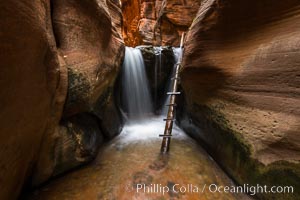
Kanarra Creek Falls in Kanarra Canyon, Utah.
Location: Kanarra Creek, Kanarraville, Utah
Image ID: 32643
Location: Kanarra Creek, Kanarraville, Utah
Image ID: 32643

Kanarra Creek Falls in Kanarra Canyon, Utah.
Location: Kanarra Creek, Kanarraville, Utah
Image ID: 32645
Location: Kanarra Creek, Kanarraville, Utah
Image ID: 32645
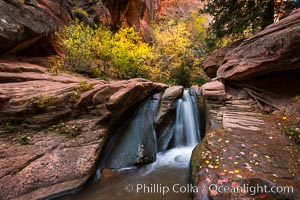
Fall Colors in Kanarra Creek Canyon, Utah.
Location: Kanarra Creek, Kanarraville, Utah
Image ID: 32646
Location: Kanarra Creek, Kanarraville, Utah
Image ID: 32646
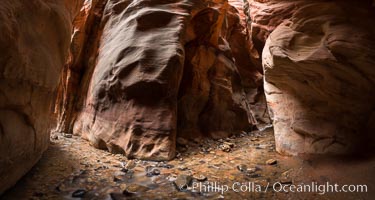
Kanarra Creek Canyon, Utah.
Location: Kanarra Creek, Kanarraville, Utah
Image ID: 32648
Panorama dimensions: 5304 x 9938
Location: Kanarra Creek, Kanarraville, Utah
Image ID: 32648
Panorama dimensions: 5304 x 9938
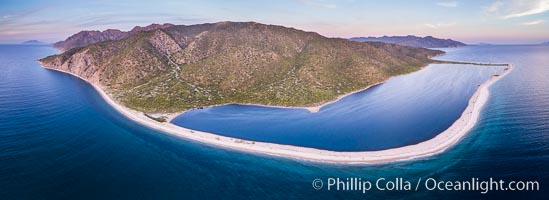
Natural Salt Lake on Isla San Jose, Aerial View, Sea of Cortez.
Location: Isla San Jose, Baja California, Mexico
Image ID: 33621
Panorama dimensions: 3966 x 10878
Location: Isla San Jose, Baja California, Mexico
Image ID: 33621
Panorama dimensions: 3966 x 10878

Salt Lake on Isla Espiritu Santo, Baja California, aerial view.
Location: Isla Espiritu Santo, Baja California, Mexico
Image ID: 33821
Panorama dimensions: 4761 x 17704
Location: Isla Espiritu Santo, Baja California, Mexico
Image ID: 33821
Panorama dimensions: 4761 x 17704
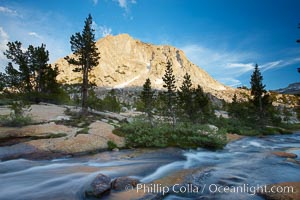
Fletcher Peak (11407') at sunset, viewed from Vogelsang High Sierra Camp in Yosemite's high country.
Location: Yosemite National Park, California
Image ID: 23203
Location: Yosemite National Park, California
Image ID: 23203
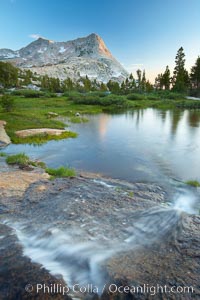
Vogelsang Peak (11516') at sunset, reflected in a small creek near Vogelsang High Sierra Camp in Yosemite's high country.
Location: Yosemite National Park, California
Image ID: 23220
Location: Yosemite National Park, California
Image ID: 23220
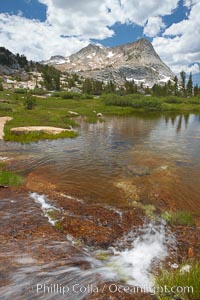
Vogelsang Peak (11516') in Yosemite's High Sierra, reflected in small creek, morning, summer.
Location: Yosemite National Park, California
Image ID: 23229
Location: Yosemite National Park, California
Image ID: 23229
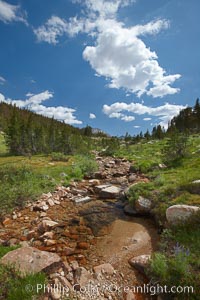
Rafferty Creek along the John Muir Trail, on approach to Vogelsang High Sierra Camp in Yosemite's high country.
Location: Yosemite National Park, California
Image ID: 23242
Location: Yosemite National Park, California
Image ID: 23242
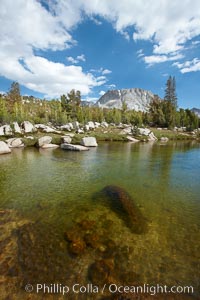
Rafferty Creek, flows under blue skies, on approach to Vogelsang High Sierra Camp. Vogelsang Peak is seen in the distance.
Location: Yosemite National Park, California
Image ID: 23247
Location: Yosemite National Park, California
Image ID: 23247
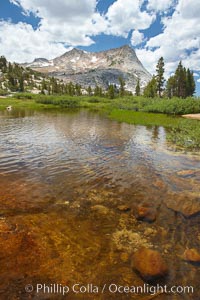
Vogelsang Peak (11516') at sunset, reflected in a small creek near Vogelsang High Sierra Camp in Yosemite's high country.
Location: Yosemite National Park, California
Image ID: 23251
Location: Yosemite National Park, California
Image ID: 23251
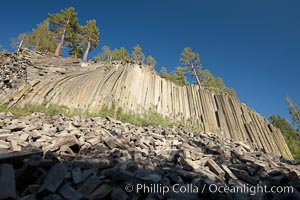
Devil's Postpile, a spectacular example of columnar basalt. Once molten and under great pressure underground, the lava that makes up Devil's Postpile cooled evenly and slowly, contracting and fracturing into polygonal-sided columns. The age of the formation is estimated between 100 and 700 thousand years old. Sometime after the basalt columns formed, a glacier passed over the formation, cutting and polishing the tops of the columns. The columns have from three to seven sides, varying because of differences in how quickly portions of the lava cooled.
Location: Devils Postpile National Monument, California
Image ID: 23281
Location: Devils Postpile National Monument, California
Image ID: 23281
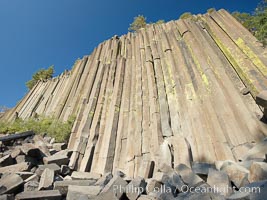
Devil's Postpile, a spectacular example of columnar basalt. Once molten and under great pressure underground, the lava that makes up Devil's Postpile cooled evenly and slowly, contracting and fracturing into polygonal-sided columns. The age of the formation is estimated between 100 and 700 thousand years old. Sometime after the basalt columns formed, a glacier passed over the formation, cutting and polishing the tops of the columns. The columns have from three to seven sides, varying because of differences in how quickly portions of the lava cooled.
Location: Devils Postpile National Monument, California
Image ID: 23282
Location: Devils Postpile National Monument, California
Image ID: 23282
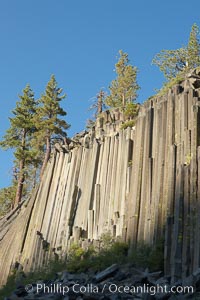
Devil's Postpile, a spectacular example of columnar basalt. Once molten and under great pressure underground, the lava that makes up Devil's Postpile cooled evenly and slowly, contracting and fracturing into polygonal-sided columns. The age of the formation is estimated between 100 and 700 thousand years old. Sometime after the basalt columns formed, a glacier passed over the formation, cutting and polishing the tops of the columns. The columns have from three to seven sides, varying because of differences in how quickly portions of the lava cooled.
Location: Devils Postpile National Monument, California
Image ID: 23283
Location: Devils Postpile National Monument, California
Image ID: 23283
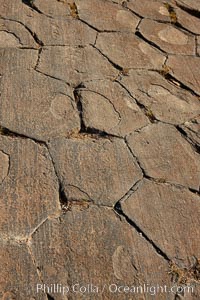
Devil's Postpile, a spectacular example of columnar basalt. Once molten and under great pressure underground, the lava that makes up Devil's Postpile cooled evenly and slowly, contracting and fracturing into polygonal-sided columns. The age of the formation is estimated between 100 and 700 thousand years old. Sometime after the basalt columns formed, a glacier passed over the formation, cutting and polishing the tops of the columns. The columns have from three to seven sides, varying because of differences in how quickly portions of the lava cooled.
Location: Devils Postpile National Monument, California
Image ID: 23284
Location: Devils Postpile National Monument, California
Image ID: 23284
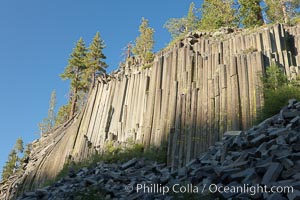
Devil's Postpile, a spectacular example of columnar basalt. Once molten and under great pressure underground, the lava that makes up Devil's Postpile cooled evenly and slowly, contracting and fracturing into polygonal-sided columns. The age of the formation is estimated between 100 and 700 thousand years old. Sometime after the basalt columns formed, a glacier passed over the formation, cutting and polishing the tops of the columns. The columns have from three to seven sides, varying because of differences in how quickly portions of the lava cooled.
Location: Devils Postpile National Monument, California
Image ID: 23286
Location: Devils Postpile National Monument, California
Image ID: 23286
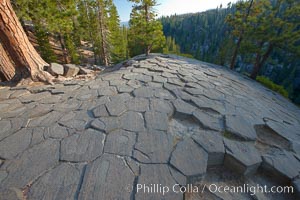
Devil's Postpile, a spectacular example of columnar basalt. Once molten and under great pressure underground, the lava that makes up Devil's Postpile cooled evenly and slowly, contracting and fracturing into polygonal-sided columns. The age of the formation is estimated between 100 and 700 thousand years old. Sometime after the basalt columns formed, a glacier passed over the formation, cutting and polishing the tops of the columns. The columns have from three to seven sides, varying because of differences in how quickly portions of the lava cooled.
Location: Devils Postpile National Monument, California
Image ID: 23287
Location: Devils Postpile National Monument, California
Image ID: 23287
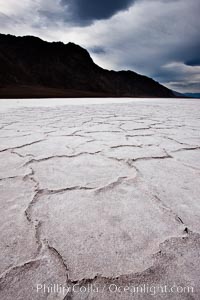
Salt polygons. After winter flooding, the salt on the Badwater Basin playa dries into geometric polygonal shapes.
Location: Badwater, Death Valley National Park, California
Image ID: 25293
Location: Badwater, Death Valley National Park, California
Image ID: 25293
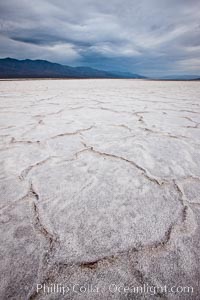
Salt polygons. After winter flooding, the salt on the Badwater Basin playa dries into geometric polygonal shapes.
Location: Badwater, Death Valley National Park, California
Image ID: 25294
Location: Badwater, Death Valley National Park, California
Image ID: 25294
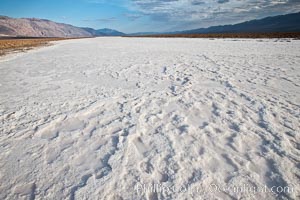
A river of salt flows across Death Valley, toward the lowest point in the United States at Badwater.
Location: Badwater, Death Valley National Park, California
Image ID: 25300
Location: Badwater, Death Valley National Park, California
Image ID: 25300
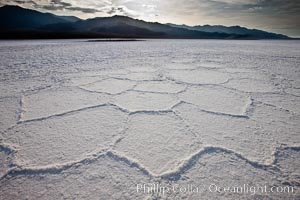
Salt polygons. After winter flooding, the salt on the Badwater Basin playa dries into geometric polygonal shapes.
Location: Badwater, Death Valley National Park, California
Image ID: 25303
Location: Badwater, Death Valley National Park, California
Image ID: 25303
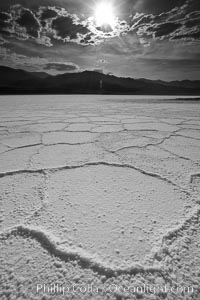
Salt polygons. After winter flooding, the salt on the Badwater Basin playa dries into geometric polygonal shapes.
Location: Badwater, Death Valley National Park, California
Image ID: 25304
Location: Badwater, Death Valley National Park, California
Image ID: 25304
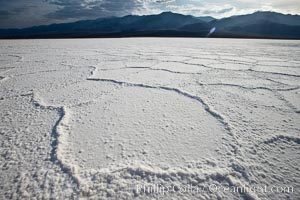
Salt polygons. After winter flooding, the salt on the Badwater Basin playa dries into geometric polygonal shapes.
Location: Badwater, Death Valley National Park, California
Image ID: 25305
Location: Badwater, Death Valley National Park, California
Image ID: 25305
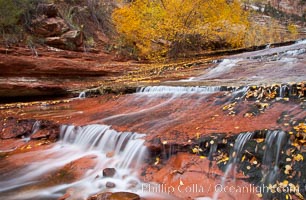
Small waterfalls and autumn trees, along the left fork in North Creek Canyon, with maple and cottonwood trees turning fall colors.
Location: Zion National Park, Utah
Image ID: 26133
Location: Zion National Park, Utah
Image ID: 26133
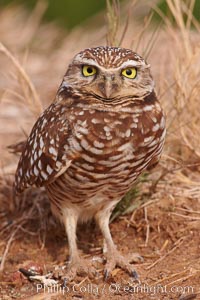
Burrowing owl (Western North American race hypugaea). This 10-inch-tall burrowing owl is standing besides its burrow. These burrows are usually created by squirrels, prairie dogs, or other rodents and even turtles, and only rarely dug by the owl itself.
Species: Burrowing owl, Athene cunicularia, Athene cunicularia hypugaea
Location: Salton Sea, Imperial County, California
Image ID: 22477
Species: Burrowing owl, Athene cunicularia, Athene cunicularia hypugaea
Location: Salton Sea, Imperial County, California
Image ID: 22477
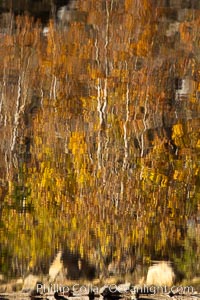
Aspen trees, fall colors, reflected in the still waters of North Lake.
Species: Aspen, Populus tremuloides
Location: Bishop Creek Canyon Sierra Nevada Mountains, California
Image ID: 26063
Species: Aspen, Populus tremuloides
Location: Bishop Creek Canyon Sierra Nevada Mountains, California
Image ID: 26063
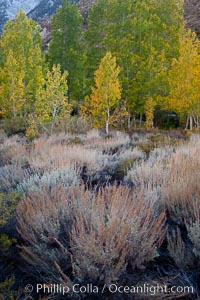
Sage brush and aspen trees, autumn, in the shade of Bishop Creek Canyon in the Sierra Nevada.
Species: Aspen, Populus tremuloides
Location: Bishop Creek Canyon Sierra Nevada Mountains, California
Image ID: 26060
Species: Aspen, Populus tremuloides
Location: Bishop Creek Canyon Sierra Nevada Mountains, California
Image ID: 26060
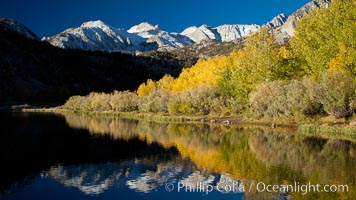
Sierra Nevada mountains and aspen trees, fall colors reflected in the still waters of North Lake.
Species: Aspen, Populus tremuloides
Location: Bishop Creek Canyon Sierra Nevada Mountains, California
Image ID: 26061
Species: Aspen, Populus tremuloides
Location: Bishop Creek Canyon Sierra Nevada Mountains, California
Image ID: 26061